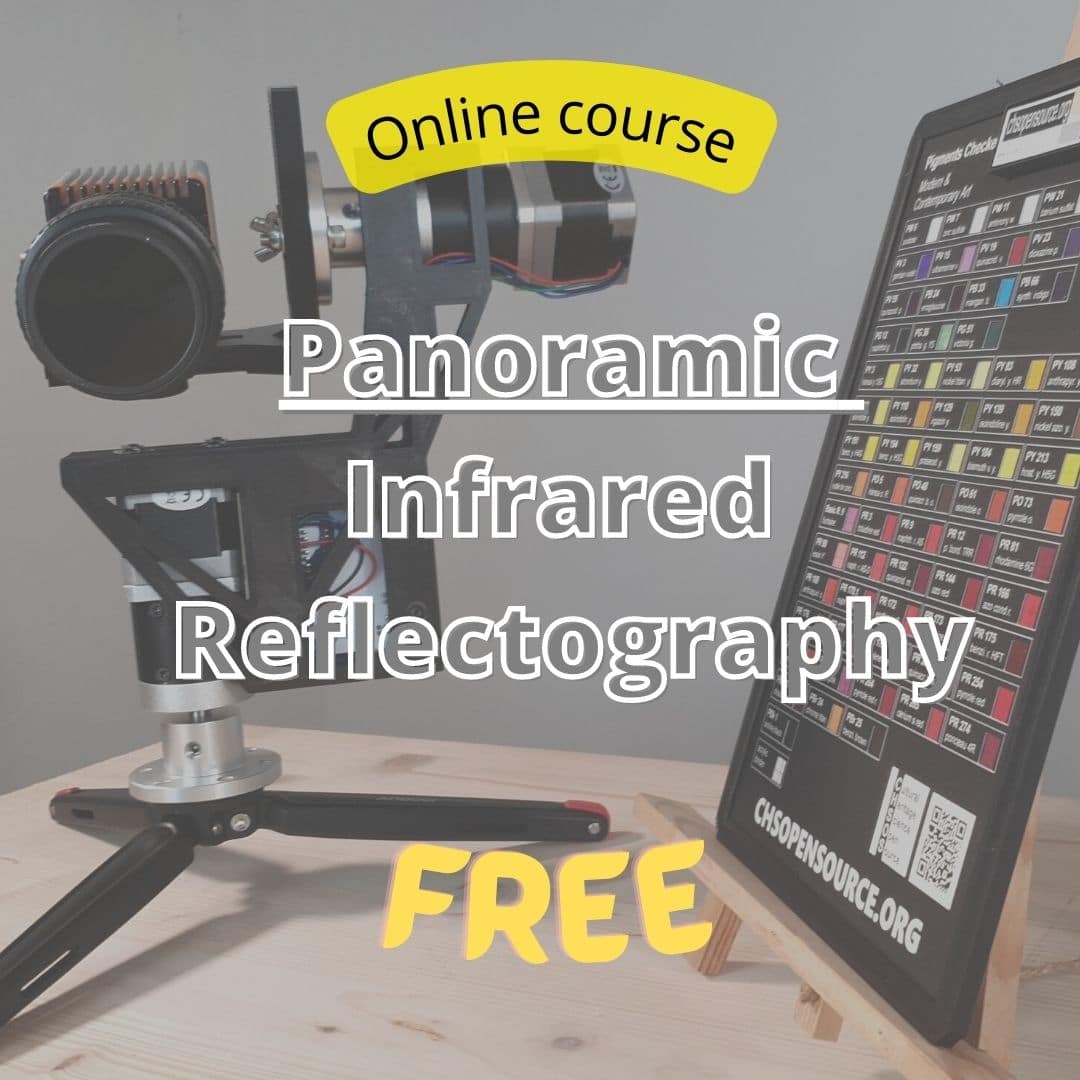
Infrared Reflectography (IRR) allows for identifying underdrawing and pentimenti. IRR is coupled with the panoramic method. It is performed with a scientific camera (InGaAs) that can image in the range 900- 1700 nm. Pigments such as azurite, Prussian blue, and malachite become transparent only in the far-infrared at about 1500 nm.
InGaAs cameras are the standard for Infrared Reflectography. Unfortunately, they have small sensors of just 320×256 pixels. Compare this with a normal 36MP photo camera with 7360 x 4912 pixels! Consequently, in order to produce an IRR image of a work of art with enough resolution, we need to stitch a large number of close-up IRR images. This process can be done with a Panoramic head and the method is called Panoramic Infrared Reflectography (PIRR).
Panoramic Infrared Reflectography (PIRR) is a fast and practical solution for these images acquisition. The PIRR method consists of taking a series of images of a scene with a precision rotating head and then using a panoramic software to align and stitch these shots into a single, seamless panorama. The pano software is easy to use; the overall panoramic method does not require specialized personnel or intensive training and, for these reasons the method is appealing to medium‐small museums and private conservators who want to implement an affordable method to professionally document their collections.
VALERIA Pano Head
In this course, we use our pano head VALERIA. You will get technical insights on hardware and software tools for PIRR.
PROs
You can mount any infrared camera on VALERIA and make the shooting automatic. Panoramic Infrared Reflectography is a fast and low-cost solution to scan a painting with any InGaAs infrared reflectography camera. We created Valeria, a panoramic head specifically designed to interface with your infrared reflectography camera.


Panoramic Infrared Reflectography – Equipment
-
Training Program in Italy – Iron Gall Ink990,00€
-
Private Training at CHSOS Studio ITALYPrice range: 990,00€ through 2.970,00€
-
Training Program in Italy990,00€
-
Valeria – Pano Head1.320,00€
-
Pigments Checker (TP-MSI calibration card included)730,00€
-
Elio – Halogen lamp180,00€











